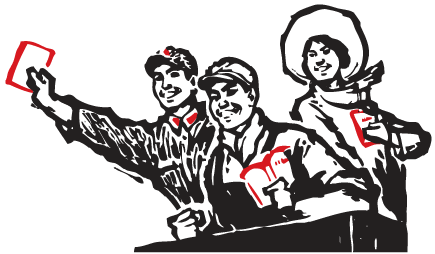
If you don’t click the blue words to follow, opportunities will fly away!
1. Introduction
Strategic industry upgrades and large-scale market development are driving IoT applications into a new wave of development. According to Gartner’s prediction, by 2020, the number of connected devices worldwide will reach 26 billion, and the IoT market size will reach 1.9 trillion USD.
Due to the demand for large-scale networking of new IoT terminals, traditional embedded operating systems cannot be directly applied to IoT devices due to their closed nature. Mobile operating systems such as iOS and Android also struggle to adapt to IoT terminals due to their larger size and higher power consumption. Therefore, operating systems need to undergo a new round of innovative development. Architecturally, to achieve generalization, the architecture is gradually becoming consistent and possesses unique characteristics of the IoT. Technologically, in response to the new terminal demands for security, low power consumption, and connectivity, operating systems are continuously improving their performance. In recent years, emerging operating systems such as ARM’s Mbed, Microsoft’s Win10 IoT, and Google’s Fuchsia have all developed and been applied in the IoT field, while China’s Huawei’s liteOS and Alibaba’s yunOS have also performed well.
2. Characteristics of IoT Operating System Development
2.1 Operating Systems and IoT Platforms Become the Dual Core of the Ecosystem
In the mobile internet era, the basis of industry and ecology is smart terminals, where most of the value is in numerous APP applications. The operating system provides a unified interface for applications and serves as the core of the ecosystem. However, the IoT focuses on connection and data, making data aggregation and processing the focal point of industrial development, leading to a change in the ecological positioning of operating systems as data aggregation access interfaces.
The upward transfer of ecological value in the IoT and the change in the ecological positioning of operating systems have caused the ecological core of the IoT to shift from a single core to a dual core. On one hand, the IoT focuses on big data services, emphasizing cloud interconnectivity of massive data, which enhances the ecological value of IoT platforms, making them the core link of the IoT ecosystem. On the other hand, the ecological model of the IoT is derived from mobile internet; the IoT operating system remains an important tool for shielding differences in underlying hardware and managing software and hardware. Its influence remains significant. Meanwhile, the collection and interconnectivity of data require the capabilities of underlying sensors, upper-layer applications, and cloud services, with the operating system providing interfaces, serving as important support for data access, aggregation, and processing.
2.2 New Demands for Low Power Consumption, Security, and Interoperability in IoT Operating Systems
With the emergence of new IoT application services, the target service objects have gradually shifted to the general consumer. New IoT applications differ significantly from traditional dedicated models in operation and maintenance modes, network architecture, and data processing, moving from independent and closed systems to open and interconnected ones. At the same time, with the continuous maturation of technologies such as communication, artificial intelligence, and autonomous driving, the intelligence of IoT terminals is deepening. The need for enhanced capabilities in terminal devices poses new demands on IoT operating systems. First, to achieve interoperability among devices from different manufacturers, operating systems must meet interoperability requirements. Second, due to resource constraints of IoT devices, low power consumption has become a necessary characteristic of IoT operating systems. Third, as the number of connected devices continues to increase, network security needs to be enhanced, making it essential to ensure software and hardware security at the operating system level. Fourth, IoT devices come in various shapes and functionalities, requiring increased support capabilities for software and hardware. Fifth, for a large number of heterogeneous terminals, IoT operating systems must meet modular requirements, allowing for customization and rapid adaptation.
2.3 Three Development Paths for IoT Operating Systems
Due to the difficulty of existing operating systems fully matching IoT application demands, three technological paths have emerged in the field of IoT operating systems. One path involves customizing and tailoring existing operating systems like Android and iOS to meet the needs of IoT access devices. Another path is based on traditional embedded operating systems and real-time operating systems, enhancing functionalities like device connectivity to meet the interconnectivity requirements of IoT access devices, forming new embedded operating systems. The third path involves the emergence of new operating systems specifically designed for IoT.
3. Recent Developments in New IoT Operating Systems at Home and Abroad
3.1 Operating System Technologies Continuously Upgrade and Optimize for New IoT Demands
(1) Operating System Architecture Distinct from the Internet Gradually Converges for IoT Applications
IoT operating systems consist of sub-modules such as the kernel, peripheral functional components, IoT collaborative framework, universal intelligent engine, and integrated development environment. These sub-modules work together while forming hierarchical dependencies, collectively composing a complete software foundation platform for various IoT application scenarios.
At the kernel level, scalability, security, and low power consumption are achieved. In terms of scalability, the kernel adapts to hardware platforms of different configurations through recompilation and binary module selection loading, achieving scalability ranging from K to M in size. For security, mechanisms such as memory protection (VMM and others) and exception management are supported to isolate erroneous code when necessary, providing kernel statistics and monitoring functions, offering fault localization tools for maintenance or development personnel. For low power consumption, two common techniques are employed: one is to lower the CPU running frequency or turn off the CPU when idle; the other is to minimize the frequency of interrupts.
Peripheral modules are added to support basic functionalities such as connectivity and graphics. To achieve lightweight functionality, IoT operating systems provide functional modules on demand. Therefore, IoT operating systems separate components such as file systems, TCP/IP network protocol stacks, and databases from the kernel, forming peripheral functional components. In many cases, only one or two functional components are needed to meet demands, while others must be trimmed away.
Through the collaborative framework, IoT devices achieve collaborative interaction. IoT devices need to interact and collaborate with each other to accomplish functions unattainable by a single IoT device. The IoT collaborative framework provides the technical foundation for this collaboration, including functionalities such as IoT device discovery mechanisms, initialization and configuration management of IoT devices, collaborative interaction between IoT devices, and cloud services.
(2) Interconnectivity Becomes an Important Focus for IoT Terminal Connectivity
Compatibility with IoT communication protocol interfaces and enhancement of collaborative framework functionalities are essential. Since the IoT represents a scenario of universal interconnectivity, the demand for interconnectivity between devices is significant. Additionally, there are various IoT connectivity scenarios; for instance, in smart home scenarios, short-range high-speed communication connects household devices with smartphones and PCs, while in smart logistics scenarios, communication protocols that cover wider ranges and consume less power are required for long-distance transmission. Therefore, IoT operating systems must support more new types of IoT communication protocols for interconnectivity.
Emerging integrated operating systems are appearing, but their prospects remain to be seen. Microsoft’s Win10 IoT achieves API sharing through device series, allowing development tools to access common APIs, automatically recognizing device environments during installation and compiling dedicated APIs, ensuring code is uniformly written while maintaining unique attributes. However, user habits largely linger on Win32 systems, and Microsoft’s IoT terminal market share remains low, leading manufacturers to hesitate in investing resources to develop cross-terminal systems. Google has introduced Fuchsia, which utilizes a new Magenta kernel, Escher renderer, and Dart language, supporting both 32-bit and 64-bit ARM processors and 64-bit PC processors, creating a new integrated operating system. Currently, this system is still under development, and the user habits and ecosystems established by Android are difficult to change in the short term, leaving the development prospects of this system still under observation.
(3) Low Power Consumption Technologies Gradually Mature, Forming Different Solutions
Since most IoT devices are wireless, maintaining low power consumption is crucial for prolonged usage. Currently, operating system companies are striving for low power consumption at the operating system level. For instance, Huawei’s liteOS has a power consumption as low as 10~3mW; Mbed has partnered with Silicon Labs to launch the low-power Mbed OS. Specifically, IoT operating systems tackle low power consumption from three aspects: scheduling mechanisms, transmission mechanisms, and power management. First, the scheduling mechanism replaces the original Linux real-time scheduling method with a centralized task scheduling approach. Second, in terms of transmission methods, optimization through network protocol stacks and routing algorithms is employed to reduce system power consumption. Lastly, in battery management, automatic selection of deep sleep modes is implemented to significantly reduce energy consumption.
(4) Hardware and Software Combination Enhances IoT Security
Based on ARM-M series TrustZone technology, hardware security is ensured. At the end of 2015, ARM introduced TrustZone technology to the M series chips, providing hardware protection for IoT security. TrustZone technology divides and isolates the hardware and software resources of the SoC into two execution environments: a secure environment and a normal environment. The secure environment executes tasks in the secure subsystem, such as storing keys and cryptographic algorithm software libraries, while the normal environment handles all other transactions. Unlike TrustZone in the A series, the M series environment switching is based on hardware security status, allowing for fast switching that meets the low power consumption and real-time demands of the IoT.
Software-level isolation methods ensure security. Software-based security solutions achieve system security through data encryption or embedding security features within the operating system. For example, Mbed OS utilizes uVisor to divide parts of the code into different BOXes, with varying permission controls between each program’s BOX. The permission access across BOXes is solidified within the operating system from the outset of the device’s production.
(5) Enhancing Software and Hardware Support Capabilities for New Intelligent Terminals
Vehicle operating systems focus on vehicle networking and autonomous driving, improving connectivity and adding ADAS interfaces. In terms of connectivity, the networking of vehicles is gradually becoming a development trend, requiring operating systems to provide communication support for vehicle networking at the underlying level, supporting V2X vehicle communication protocols and enhancing data access and processing capabilities from in-car networks, inter-vehicle networks, and mobile vehicular networks. In terms of intelligence, with the continuous advancement of autonomous driving technology, vehicle operating systems are also strengthening their coupling with ECUs, connecting sensor data with computing systems via network interfaces, allowing the operating system to manage and schedule computing resources to provide a software foundation for autonomous driving.
Robot operating systems focus on artificial intelligence and introduce AI engines. From the perspective of underlying hardware, robots enhance their motion control capabilities and perception functions, leading to increased demands on underlying sensors, and operating systems continuously enhance support for underlying hardware. From the perspective of upper-layer software, robots introduce various native applications for different application scenarios, creating an ecosystem for robot operating systems, with the operating system providing code libraries and interfaces to support applications.
3.2 Patent Applications for IoT Operating Systems Gradually Increase, Yet Remain Weak
Currently, according to statistics from the China Academy of Information and Communications Technology, since 2013, patent applications for IoT operating systems have exploded, surging from 86 in 2012 to 189 in 2013, and are continuing to show a gradual growth trend. Patents revolve around mobile operating systems such as iOS and Android, as well as IoT operating systems like Contiki, Tiny OS, ARM Mbed, and Huawei LiteOS, among others, some of which are applied for by Chinese enterprises or individuals. However, compared to fields with high patent application volumes like sensors, wired communication technology, and short-distance communication technology, the number of technical patents focused on IoT operating systems remains relatively low, and the pace of technological development and innovation is still slow.
3.3 IoT Operating Systems Show a Development Trend of Dominantly Open Source with Closed Source Coexisting
On one hand, from an industrial perspective, China’s IoT is currently in a development phase, needing to lower technical barriers to accelerate popularization. Open source, as a means of ecosystem construction, is beneficial for accelerating the development of IoT in China. From a technical perspective, the diverse forms of IoT terminals, high interconnectivity requirements, and severe fragmentation lead to high compatibility requirements for hardware and software development. Open source can provide a foundation for compatibility. Emerging IoT operating systems such as LiteOS, Brillo, and Tizen adopt open-source strategies; for instance, LiteOS’s code is open-source and has built a community involving players like chip manufacturers, modules, open-source hardware, makers, and software developers. However, to ensure security and maintain control, some operating systems’ open-source models resemble the Android model, where the AOSP is open-source, but GMS is closed-source. Most parts are open-source, while key components are closed-source and licensed, such as Mbed being free and partially open-source, yet it still contains binary mechanisms, and some parts are provided in the form of tightly protected closed-source drivers for system-on-chip products launched by chip manufacturers.
On the other hand, certain special industries have unique needs, such as aerospace and hydropower, where security and confidentiality requirements are high, necessitating the coexistence of closed-source strategies.
3.4 An IoT Ecosystem Gradually Established Around Operating Systems and IoT Platforms
As the ecological core of the IoT gradually shifts towards a dual core of operating systems and IoT platforms, enterprises developing new IoT operating systems are increasingly supporting IoT platform construction, each focusing on their unique characteristics to build an IoT ecosystem.
Focusing on operating systems as the core. Relying on the strong influence of the mature ecosystems of mobile and PC operating systems, enterprises emphasize operating systems when developing IoT operating systems, transferring the technological and ecological advantages of mobile/PC to IoT. For instance, Apple adopts a completely closed development strategy, successively launching CarPlay, Watch OS, and HealthKit, deeply integrating the iOS system and application ecosystem into automobiles and wearable devices, and deeply participating in the development, production, and manufacturing processes of upstream components through funding and technical support to create an extreme user experience from terminals to applications.
Focusing on both operating systems and IoT platforms as the core. New operating systems designed specifically for IoT require rapidly establishing complete industrial chains to enter the market. Meanwhile, most enterprises’ main businesses are in the internet or connectivity sectors, giving them advantages in cloud interconnectivity, hence new operating systems focus on building IoT ecosystems based on a dual core. For example, ARM lays out its IoT ecosystem centered around the Cortex®-M architecture, Mbed OS, device management systems, and open-source communities, establishing close partnerships with MCU chip providers through physical IP package authorization, processor licensing, and architecture/instruction set licensing; offering Mbed OS for free to partners with partial open-source and supporting secondary development; collaborating with multiple cloud service providers such as IBM, Stream, Ericsson, and KDDI to create a unified development environment to attract third-party developers; and partnering with system integrators to provide various IoT solutions for industry users.
Focusing on IoT platforms as the core. On one hand, embedded operating systems generally have weaker interactivity and interoperability; on the other hand, these operating systems are often used in industrial sectors where the demand for large-scale networking is increasing due to intelligence. Therefore, traditional embedded operating systems need to leverage IoT platforms to enhance connectivity, analysis, and processing capabilities.
4. Development Suggestions for China’s IoT Operating Systems
4.1 Opportunities for the Development of China’s IoT Operating Systems
The incremental market brings numerous new opportunities. Currently, there is no mature product that can fully adapt to IoT applications. Even traditional operating system companies like Microsoft and Wind River need to adjust their product lines to suit the new market. China’s IoT industry is developing rapidly, becoming the largest market globally, so a significant portion of the incremental market for IoT operating systems will undoubtedly come from China.
IoT operating systems are closely integrated with cloud computing and mobile internet. Currently, Chinese manufacturers developing IoT operating systems have relevant backgrounds in the internet and cloud services, allowing for advantageous transfers. For instance, Alibaba launched yunOS based on Alibaba Cloud, along with the Yoc open platform; Huawei launched liteOS and the Oceanconnect IoT platform based on Huawei Cloud and is vigorously promoting low-power wide-area networks, leveraging its connectivity advantages.
4.2 Application Status of China’s IoT Operating Systems
China’s IoT operating systems are developing at different paces across various fields. In the smart home sector, Qingke Mico and Alibaba’s yunOS have developed well, initially forming an ecosystem with underlying hardware and appliance manufacturers. Alibaba Cloud, centered around Yun OS and its cloud platform, has established partnerships with over 40 hardware manufacturers, launching numerous smart home products with good application performance through commercial alliances, open operational models, and innovative product service strategies. In the robotics field, applications of artificial intelligence-level operating systems have emerged, but an ecosystem has yet to be formed, for instance, the Turing robot team released an artificial intelligence robot operating system, Turing OS. In the automotive system sector, Wince, QNX, and Android occupy most of the market share, while domestic new operating systems have yet to produce mature products.
4.3 Suggestions for the Development of China’s IoT Operating Systems
(1) Leverage “IoT” and “Smart Hardware” with Policy/Market Guidance and Support
The development of heavyweight IoT operating systems in China is relatively slow. By relying on policies for smart hardware and smart cities, special funds should be established to accelerate the development of heavyweight operating systems. Lightweight IoT operating systems are developing well, and as market demand continues to stimulate, they should focus on application scenarios and niche markets for differentiated development; linking upstream and downstream to achieve collaborative development.
(2) Accelerate Innovative Technology Research and Development
Focus on the technical field of IoT operating systems, vigorously develop technologies related to security, low power consumption, and interoperability; heavyweight operating systems should gradually expand functionalities, closely coupling with cutting-edge technologies such as artificial intelligence and data analysis. In terms of security, leverage TrustZone technology and isolation concepts to strengthen software security at the operating system level; simultaneously, utilize TLS to create a full lifecycle security system for the kernel, transmission, and cloud. For low power consumption, improve scheduling and transmission mechanisms for low power consumption solutions, balancing low power consumption and real-time performance, and enhancing low power consumption mechanism innovation. In terms of interconnectivity, leverage domestic low-power wide-area network development advantages to strengthen the support capabilities of operating systems for connectivity technologies; within heavyweight operating systems, couple cloud application engines to enhance cloud interconnectivity.
(3) Strengthen Cooperation with All Links in the Industry Chain
Strengthen cooperation between operating systems and hardware enterprises, developers, and platform operation enterprises around the operating system and IoT platform to establish the IoT ecosystem. First, strengthen cooperation with hardware enterprises. Define standard hardware driver interfaces to achieve separation between the kernel and hardware drivers. By defining standard API interfaces, achieve separation between applications and hardware. Through this cooperation, operating systems can better understand the main sources of demand, focusing on hardware drivers, software-hardware separation, terminal adaptation, collaboration, etc. Second, strengthen cooperation with application developers. Optimize solutions for specific scenarios, jointly optimizing algorithms and code. Third, strengthen cooperation with platform operation enterprises. Terminal-side operating systems need to cooperate with platform-side functionalities such as state query, configuration management, alarm management, and sensor management, and enhanced cooperation can promote the rapid establishment of the “operating system + IoT platform” ecosystem.
References
[1] IEC. IoT 2020: Smart and Secure IoT Platform.
[2] VDC research. The Global Market for IoT & Embedded Operating Systems.
This article originally appeared in the 5th issue of “Telecom Network Technology” in 2017.

Author Information

Wang Mei: Engineer at the Institute of Informationization and Industrialization Integration, China Academy of Information and Communications Technology. Contact: [email protected].

Recommended Reading

Special Topic on Information Consumption III | Artificial Intelligence Assists in Enhancing the Supply of New Information Consumption
Conference | Invitation to the Launch Ceremony of the First Industrial Big Data Competition

Quick, click to read the original text and enhance your knowledge!
